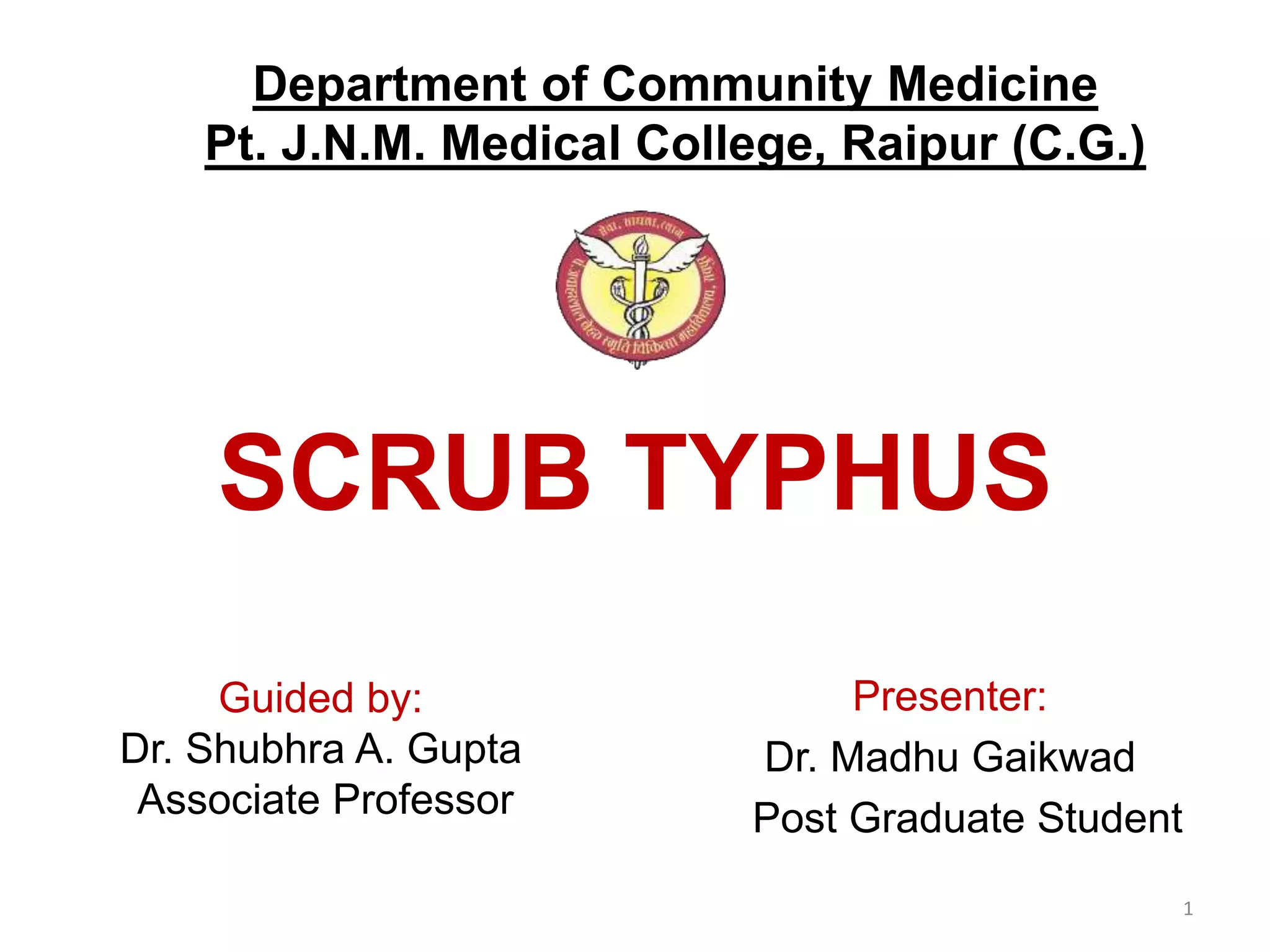Scrub typhus is a bacterial infection caused by Orientia tsutsugamushi transmitted through the bites of infected trombiculid mites. It is endemic in parts of Asia and Australia. Clinical features include fever, headache, and rash appearing 3-5 days after onset. Complications can include pneumonia, renal failure, and multi-organ dysfunction. Diagnosis is made through serology, PCR, or culture. Doxycycline is the treatment of choice for 7-14 days. Prevention involves protective clothing, insect repellents, and clearing of vegetation to reduce the mite population.








































